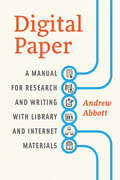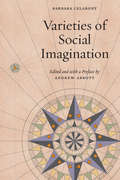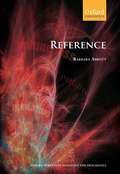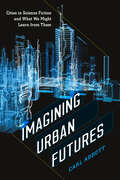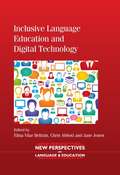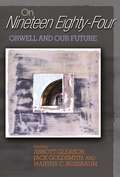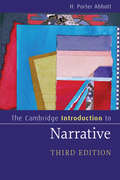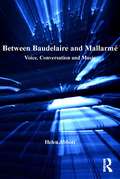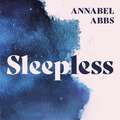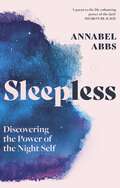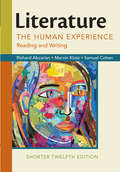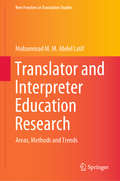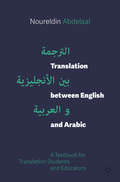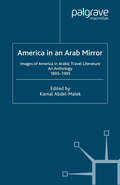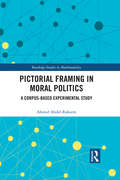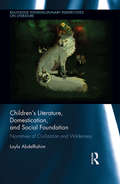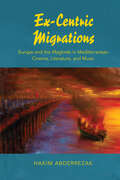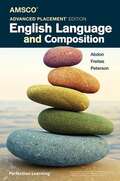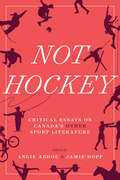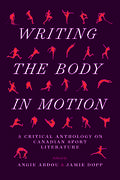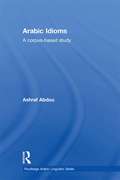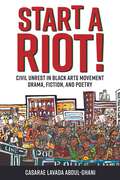- Table View
- List View
Digital Paper: A Manual for Research and Writing with Library and Internet Materials (Chicago Guides to Writing, Editing, and Publishing)
by Andrew AbbottToday’s researchers have access to more information than ever before. Yet the new material is both overwhelming in quantity and variable in quality. How can scholars survive these twin problems and produce groundbreaking research using the physical and electronic resources available in the modern university research library? In Digital Paper, Andrew Abbott provides some much-needed answers to that question. Abbott tells what every senior researcher knows: that research is not a mechanical, linear process, but a thoughtful and adventurous journey through a nonlinear world. He breaks library research down into seven basic and simultaneous tasks: design, search, scanning/browsing, reading, analyzing, filing, and writing. He moves the reader through the phases of research, from confusion to organization, from vague idea to polished result. He teaches how to evaluate data and prior research; how to follow a trail to elusive treasures; how to organize a project; when to start over; when to ask for help. He shows how an understanding of scholarly values, a commitment to hard work, and the flexibility to change direction combine to enable the researcher to turn a daunting mass of found material into an effective paper or thesis. More than a mere how-to manual, Abbott’s guidebook helps teach good habits for acquiring knowledge, the foundation of knowledge worth knowing. Those looking for ten easy steps to a perfect paper may want to look elsewhere. But serious scholars, who want their work to stand the test of time, will appreciate Abbott’s unique, forthright approach and relish every page of Digital Paper.
Varieties of Social Imagination
by Andrew Abbott Barbara CelarentIn July 2009, the American Journal of Sociology (AJS) began publishing book reviews by an individual writing as Barbara Celarent, professor of particularity at the University of Atlantis. Mysterious in origin, Celarent’s essays taken together provide a broad introduction to social thinking. Through the close reading of important texts, Celarent’s short, informative, and analytic essays engaged with long traditions of social thought across the globe—from India, Brazil, and China to South Africa, Turkey, and Peru. . . and occasionally the United States and Europe. Sociologist and AJS editor Andrew Abbott edited the Celarent essays, and in Varieties of Social Imagination, he brings the work together for the first time. Previously available only in the journal, the thirty-six meditations found here allow readers not only to engage more deeply with a diversity of thinkers from the past, but to imagine more fully a sociology—and a broader social science—for the future.
Reference: Oxford Surveys in Semantics and Pragmatics
by Barbara AbbottThis book introduces the most important problems of reference and considers the solutions that have been proposed to explain them. Reference is at the centre of debate among linguists and philosophers and, as Barbara Abbott shows, this has been the case for centuries. She begins by examining the basic issue of how far reference is a two place (words-world) or a three place (speakers-words-world) relation. She then discusses the main aspects of the field and the issues associated with them, including those concerning proper names; direct reference and individual concepts; the difference between referential and quantificational descriptions; pronouns and indexicality; concepts like definiteness and strength; and noun phrases in discourse. Professor Abbott writes with exceptional verve and wit. She presupposes no technical knowledge or background and presents issues and analyses from first principles, illustrating them at every stage with well-chosen examples. Her book is addressed in the first place to advanced undergraduate and graduate students in linguistics and philosophy of language, but it will also appeal to students and practitioners in computational linguistics, cognitive psychology, and anthropology. All will welcome the clarity this guide brings to a subject that continues to challenge the leading thinkers of the age.
Imagining Urban Futures: Cities in Science Fiction and What We Might Learn from Them
by Carl AbbottCarl Abbott, who has taught urban studies and urban planning in five decades, brings together urban studies and literary studies to examine how fictional cities in work by authors as different as E. M. Forster, Isaac Asimov, Kim Stanley Robinson, and China Miéville might help us to envision an urban future that is viable and resilient. Imagining Urban Futures is a remarkable treatise on what is best and strongest in urban theory and practice today, as refracted and intensely imagined in science fiction. As the human population grows, we can envision an increasingly urban society. Shifting weather patterns, rising sea levels, reduced access to resources, and a host of other issues will radically impact urban environments, while technology holds out the dream of cities beyond Earth. Abbott delivers a compelling critical discussion of science fiction cities found in literary works, television programs, and films of many eras from Metropolis to Blade Runner and Soylent Green to The Hunger Games, among many others.
Inclusive Language Education and Digital Technology
by Chris Abbott Elina Vilar BeltranThis volume brings together chapters which collectively address issues relating to inclusive language education and technology. Topics include language teaching to the Deaf, Hard of Hearing and students with dyslexia, benefits of multimodal approaches for language learning, examples of software use in the language classroom, and copyright matters. The book demonstrates not only a commitment to inclusive practices but suggests practical ideas and strategies for practising and aspiring language teachers and those in support roles. The book also provides case studies and relates the issues to theoretical and policy frameworks. In drawing on different European perspectives, the book aims to promote discussion and collaboration within an international community of practice, especially about the role of technology in widening and strengthening opportunities for teachers and pupils alike and ensuring more effective Modern Foreign Language teaching, learning and assessment for all learners.
An Introduction to Bibliographical and Textual Studies
by Craig S. Abbott William Proctor WilliamsTo a reader of Joyce's Ulysses, it makes a difference whether one of Stephen Dedalus's first thoughts is "No mother" (as in the printed version) or "No, mother!" (as in the manuscript). The scholarship surrounding such textual differences--and why this discipline should concern readers and literary scholars alike--is the focus of William Proctor Williams and Craig S. Abbott's acclaimed handbook.This updated, fourth edition outlines the study of texts' composition, revision, physical embodiments, process of transmission, and manner of reception; describes how new technologies such as digital imaging and electronic tagging have changed the way we produce, read, preserve, and research texts; discusses why these matters are central to a historical understanding of literature; and shows how the insights, methods, and products of bibliographical and textual studies can be applied to other branches of scholarship.
On Nineteen Eighty-Four: Orwell and Our Future
by Abbott Gleason, Jack Goldsmith, and Martha C. NussbaumGeorge Orwell's Nineteen Eighty-Four is among the most widely read books in the world. For more than 50 years, it has been regarded as a morality tale for the possible future of modern society, a future involving nothing less than extinction of humanity itself. Does Nineteen Eighty-Four remain relevant in our new century? The editors of this book assembled a distinguished group of philosophers, literary specialists, political commentators, historians, and lawyers and asked them to take a wide-ranging and uninhibited look at that question. The editors deliberately avoided Orwell scholars in an effort to call forth a fresh and diverse range of responses to the major work of one of the most durable literary figures among twentieth-century English writers. As Nineteen Eighty-Four protagonist Winston Smith has admirers on the right, in the center, and on the left, the contributors similarly represent a wide range of political, literary, and moral viewpoints. The Cold War that has so often been linked to Orwell's novel ended with more of a whimper than a bang, but most of the issues of concern to him remain alive in some form today: censorship, scientific surveillance, power worship, the autonomy of art, the meaning of democracy, relations between men and women, and many others. The contributors bring a variety of insightful and contemporary perspectives to bear on these questions.
The Cambridge Introduction to Narrative (Cambridge Introductions to Literature)
by H. Porter AbbottWhat is narrative? How does it work and how does it shape our lives? H. Porter Abbott emphasizes that narrative is found not just in literature, film, and theatre, but everywhere in the ordinary course of people's lives. This widely used introduction, now revised and expanded in its third edition, is informed throughout by recent developments in the field and includes one new chapter. The glossary and bibliography have been expanded, and new sections explore unnatural narrative, retrograde narrative, reader-resistant narratives, intermedial narrative, narrativity, and multiple interpretation. With its lucid exposition of concepts, and suggestions for further reading, this book is not only an excellent introduction for courses focused on narrative but also an invaluable resource for students and scholars across a wide range of fields, including literature and drama, film and media, society and politics, journalism, autobiography, history, and still others throughout the arts, humanities, and social sciences.
The Cambridge Introduction to Narrative (Second Edition)
by H. Porter AbbottWhat is narrative? How does it work and how does it shape our lives and the texts we read? H. Porter Abbott emphasizes that narrative is found not just in literature, film, and theater, but everywhere in the ordinary course of people's lives. This widely used introduction, now thoroughly revised, is informed throughout by recent developments in the field and includes two new chapters. With its lucid exposition of concepts and suggestions for further reading, this book is not only an excellent introduction for courses focused on narrative but also an invaluable resource for students and scholars across a wide range of fields, including literature and drama, film and media, society and politics, journalism, autobiography, history, and still others throughout the arts, humanities, and social sciences.
Between Baudelaire and Mallarmé: Voice, Conversation and Music
by Helen AbbottAs the status of poetry became less and less certain over the course of the nineteenth century, poets such as Baudelaire and Mallarmé began to explore ways to ensure that poetry would not be overtaken by music in the hierarchy of the arts. Helen Abbott examines the verse and prose poetry of these two important poets, together with their critical writings, to address how their attitudes towards the performance practice of poetry influenced the future of both poetry and music. Central to her analysis is the issue of 'voice', a term that remains elusive in spite of its broad application. Acknowledging that voice can be physical, textual and symbolic, Abbott explores the meaning of voice in terms of four categories: (1) rhetoric, specifically the rules governing the deployment of voice in poetry; (2) the human body and its effect on how voice is used in poetry; (3) exchange, that is, the way voices either interact or fail to interact; and (4) music, specifically the question of whether poetry should be sung. Abbott shows how Baudelaire and Mallarmé exploit the complexity and instability of the notion of voice to propose a new aesthetic that situates poetry between conversation and music. Voice thus becomes an important process of interaction and exchange rather than something stable or static; the implications of this for Baudelaire and Mallarmé are profoundly significant, since it maps out the possible future of poetry.
The Bookmaker's Daughter: A Memory Unbound
by Shirley AbbottShirley Abbott's deeply felt memoir of her Arkansas childhood in the 1940s and 1950s examines her difficult relationship with the most important man in her young life--her daddy. Alfred Bemont ("Hat") Abbott did not craft fine volumes, though he allowed Shirley's mother to believe as much during their courtship. His craft was taking bets on horses and paying off the winnings. But this gentleman bandit also loved to read and bequeathed to his only daughter the world of language and books, where she learned her first lessons in what it is to be a woman. At Hat's urging to study hard, to grow strong and independent, Shirley blossomed into valedictorian of her high school class, and unlike her peers--all on the way to marriage and motherhood--went fearlessly on to college. But when at last she wished to test her wings, to leave Hot Springs for New York City, Hat refused to let her go. Richly detailed with family anecdote, feminist insight, history, sociology, and Southern mythology, The Bookmaker's Daughter strikes familiar and resonant chords. Shirley Abbott has courageously probed the past to emerge with this narrative of a relationship that was complex and volatile but ultimately liberating. Born and brought up in Hot Springs, Arkansas, Shirley Abbott now lives in Port Washington, New York. She works in Manhattan as a writer for a health newsletter and has also written a previous book, Womenfolks: Growing Up Down South. She has two daughters, Katharine and Elizabeth Tomkievicz.
Sleepless: Discovering the Power of the Night Self
by Annabel Abbs'Sleepless has changed how I feel about sleep . . . I was captivated' The Times, Book of the Week'This book will inspire you to get up, light a candle, and experience your own Night Self' Financial TimesTHE NIGHT SELF IS: CREATIVE. CURIOUS. VULNERABLE. ENCHANTED. COURAGEOUS.In the winter of 2020, Annabel Abbs experienced a series of bereavements. As she grieved, she kept busy by day, but at night sleep eluded her. And yet her sleeplessness led to a profound and unexpected discovery: her Night Self. As the night transformed into a place of creativity and liberation, Annabel found she wasn't alone. From the radical fifteenth-century philosopher Laura Cereta and subversive artist Louise Bourgeois, to Virginia Woolf and the activist Peace Pilgrim, women have long found sanctuary, inspiration and courage in darkness.Drawing on the latest science, which shows we are more imaginative, open-minded and reflective at night, Annabel set out to discover the potential of her Night Self. Sleepless follows her journey, from midnight hikes to starlit swims, from Singapore, the brightest city on Earth, to the darkest corner of the Arctic Circle, and finally to that most elusive of places - sleep.A moving, revelatory voyage into the dark, Sleepless invites us to feel less anxious about our sleep, and to embrace the possibilities of the night.
Sleepless: Discovering the Power of the Night Self
by Annabel Abbs'Sleepless has changed how I feel about sleep . . . I was captivated' The Times, Book of the Week'This book will inspire you to get up, light a candle, and experience your own Night Self' Financial TimesTHE NIGHT SELF IS: CREATIVE. CURIOUS. VULNERABLE. ENCHANTED. COURAGEOUS.In the winter of 2020, Annabel Abbs experienced a series of bereavements. As she grieved, she kept busy by day, but at night sleep eluded her. And yet her sleeplessness led to a profound and unexpected discovery: her Night Self. As the night transformed into a place of creativity and liberation, Annabel found she wasn't alone. From the radical fifteenth-century philosopher Laura Cereta and subversive artist Louise Bourgeois, to Virginia Woolf and the activist Peace Pilgrim, women have long found sanctuary, inspiration and courage in darkness.Drawing on the latest science, which shows we are more imaginative, open-minded and reflective at night, Annabel set out to discover the potential of her Night Self. Sleepless follows her journey, from midnight hikes to starlit swims, from Singapore, the brightest city on Earth, to the darkest corner of the Arctic Circle, and finally to that most elusive of places - sleep.A moving, revelatory voyage into the dark, Sleepless invites us to feel less anxious about our sleep, and to embrace the possibilities of the night.
Literature
by Richard Abcarian Marvin Klotz Samuel CohenNow in its twelfth edition, Literature: The Human Experience provides a broad range of compelling fiction, poetry, drama, and nonfiction that explore the intersections and contradictions of human nature. Timeless themes such as innocence and experience, conformity and rebellion, culture and identity, love and hate, and life and death are presented through the context of connections and experiences that are enduringly human. By presenting diverse selections from contemporary and classic authors across time and cultures, students are certain to discover literature in this anthology with which they can connect. <p><p> Literature: The Human Experience is also designed to make teaching literature convenient for instructors and to make reading and writing about literature appealing for students. . A flexible arrangement of literature within each theme allows instructors to teach the text however best suits their classrooms, and the expert instruction and exciting selections will help to guide and entice even the most reluctant readers. <p> Enhancements to the twelfth edition include four new casebooks--one per genre--that help students to see how literature can make arguments as well as new reading questions that ask students to make arguments about the selections. To top it off, Literature: The Human Experience costs about $10 to $30 less than comparable anthologies, providing a wealth of material for an affordable price.
Translator and Interpreter Education Research: Areas, Methods and Trends (New Frontiers in Translation Studies)
by Muhammad M. Abdel LatifThis book provides a detailed introduction and guide to researching translator and interpreter education. Providing an overview of the main research topics, trends and methods, the book covers the following six areas: training effectiveness, learning and teaching practices, assessment, translation and interpreting processes, translated and interpreted texts, and professionals’ experiences and roles. The book focuses on explaining the issues and topics researched in each area, and showing how they have been researched. As the first book to provide a comprehensive overview of translator and interpreter education research, it has important implications to developing its areas at the theoretical and practical levels. In addition, it offers an invaluable guide for those interested in researching translator and interpreter education areas, and in educating translators and interpreters.
Translation between English and Arabic: A Textbook for Translation Students and Educators
by Noureldin AbdelaalThis textbook provides a comprehensive resource for translation students and educators embarking on the challenge of translating into and out of English and Arabic. Combining a solid basis in translation theory with examples drawn from real texts including the Qu’ran, the author introduces a number of the problems and practical considerations which arise during translation between English and Arabic, equipping readers with the skills to recognise and address these issues in their own work through practical exercises. Among these considerations are grammatical, semantic, lexical and cultural problems, collocations, idioms and fixed expressions. With its coverage of essential topics including culturally-bound terms and differences, both novice and more experienced translators will find this book useful in the development of their translation practice.
America in An Arab Mirror: Images of America in Arabic Travel Literature: An Anthology
by K. Abdel-MalekThis distinguished anthology presents for the first time in English travel essays by Arabic writers who have visited America in the second half of the century. The view of America which emerges from these accounts is at once fascinating and illuminating, but never monolithic. The writers hail from a variety of viewpoints, regions, and backgrounds, so their descriptions of America differently engage and revise Arab pre-conceptions of Americans and the West. The country figures as everything from the unchanging Other, the very antithesis of the Arab self, to the seductive female, to the Other who is both praiseworthy and reprehensible.
Pictorial Framing in Moral Politics: A Corpus-Based Experimental Study (Routledge Studies in Multimodality)
by Ahmed Abdel-RaheemThis book seeks to extend research on framing beyond linguistic and cognitive perspectives by examining framing in visual and multimodal texts and their impact on moral cognition and attitudes. Drawing on perspectives from frame semantics, blending theory, relevance theory, and pragmatics, the volume establishes a model of "pictorial framing", arguing that subtle alterations in the visual presentation of issues around judgment and choice in such texts impact perception, and applies this framework to a range of case studies from Egyptian, British, and American cartoons and illustrations. The book demonstrates the affordances of applying this framework in enhancing our understanding of both the nature of word-image relations and issues of representation in the op-ed genre, but also in other forms of media more generally. The volume will be of particular interest to students and scholars in multimodality, critical discourse analysis, cognitive linguistics, social psychology, and communication studies.
Children's Literature, Domestication, and Social Foundation: Narratives of Civilization and Wilderness (Routledge Interdisciplinary Perspectives on Literature)
by Layla AbdelRahimThis study of children's literature as knowledge, culture, and social foundation bridges the gap between science and literature and examines the interconnectedness of fiction and reality as a two-way road. The book investigates how the civilized narrative orders experience by means of segregation, domestication, breeding, and extermination, arguing instead that the stories and narratives of wilderness project chaos and infinite possibilities for experiencing the world through a diverse community of life. AbdelRahim engages these narratives in a dialogue with each other and traces their expression in the various disciplines and books written for both children and adults, analyzing the manifestation of fictional narratives in real life. This is both an inter- and multi-disciplinary endeavor that is reflected in the combination of research methods drawn from anthropology and literary studies as well as in the tracing of the narratives of order and chaos, or civilization and wilderness, in children's literature and our world. Chapters compare and contrast fictional children's books that offer different real-world socio-economic paradigms, such as A.A. Milne's Winnie-the-Pooh projecting a civilized monarcho-capitalist world, Nikolai Nosov's trilogy on The Adventures of Dunno and Friends presenting the challenges and feats of an anarcho-socialist society in evolution from primitivism towards technology, and Tove Jansson's Moominbooks depicting the harmony of anarchy, chaos, and wildness. AbdelRahim examines the construction, transmission, and acquisition of knowledge in children’s literature by visiting the very nature of literature, culture, and language and the civilized structures that domesticate the world. She brings radically new perspectives to the knowledge, culture, and construction of human beings, making an invaluable contribution to a wide range of disciplines and for those engaged in revolutionizing contemporary debates on the nature of knowledge, human identity, and the world.
Ex-Centric Migrations: Europe and the Maghreb in Mediterranean Cinema, Literature, and Music
by Hakim AbderrezakEx-Centric Migrations examines cinematic, literary, and musical representations of migrants and migratory trends in the western Mediterranean. Focusing primarily on clandestine sea-crossings, Hakim Abderrezak shows that despite labor and linguistic ties with the colonizer, migrants from the Maghreb (Morocco, Algeria, and Tunisia) no longer systematically target France as a destination, but instead aspire toward other European countries, notably Spain and Italy. In addition, the author investigates other migratory patterns that entail the repatriation of émigrés. His analysis reveals that the films, novels, and songs of Mediterranean artists run contrary to mass media coverage and conservative political discourse, bringing a nuanced vision and expert analysis to the sensationalism and biased reportage of such events as the Mediterranean maritime tragedies.
English Language and Composition, AMSCO® Advanced Placement® Edition
by Brandon Abdon Timothy Freitas Lauren PetersonNIMAC-sourced textbook
Not Hockey: Critical Essays on Canada’s Other Sport Literature
by Angie Abdou Jamie DoppIn this carefully curated collection of essays, editors Jamie Dopp and Angie Abdou go beyond their first collection, Writing the Body in Motion, to engage with the meaning of sport found in Canadian sport literature. How does “sport” differ from physically risky recreational activities that require strength and skill? Does sport demand that someone win? At what point does a sport become an art? With the aim of prompting reflections on and discussions of the boundaries of sport, contributors explore how literature engages with sport as a metaphor, as a language, and as bodily expression. Instead of a focus on what is often described as Canada’s national pastime, contributors examine sports in Canadian literature that are decidedly not hockey. From skateboarding and parkour to fly fishing and curling, these essays engage with Canadian histories and broader societal understandings through sports on the margin. Interspersed with original reflections by iconic Canadian literary figures such as Steven Heighton, Aritha Van Herk, Thomas Wharton, and Timothy Taylor, this volume is fresh and intriguing and offers new ways of reading the body.
Writing the Body in Motion: A Critical Anthology on Canadian Sport Literature
by Angie Abdou Jamie DoppSport literature is never just about sport. The genre’s potential to explore the human condition, including aspects of violence, gender, and the body, has sparked the interest of writers, readers, and scholars. Over the last decade, a proliferation of sport literature courses across the continent is evidence of the sophisticated and evolving body of work developing in this area. Writing the Body in Motion offers introductory essays on the most commonly taught Canadian sport literature texts. The contributions sketch the state of current scholarship, highlight recurring themes and patterns, and offer close readings of key works. Organized chronologically by source text, ranging from Shoeless Joe (1982) to Indian Horse (2012), the essays offer a variety of ways to read, consider, teach, and write about sport literature.
Arabic Idioms: A Corpus Based Study (Routledge Arabic Linguistics Series)
by Ashraf AbdouIdioms represent a fascinating linguistic phenomenon that has captured the attention of many linguists for decades. This corpus-based study of idioms in Modern Standard Arabic sheds light on their intricate nature, establishes the major patterns of their linguistic behaviour, and provides explanations for these patterns. Adopting a descriptive framework, the study addresses two main issues with regard to the discursive behaviour of idioms: the discursive functions that they perform and the ways in which they contribute to the cohesion of their texts. Examining primary data with regard to the semantic, discursive, lexical and grammatical properties of Arabic idioms, the author touches on the ubiquity of these expressions in language use, the wide range of functions they perform in discourse, the problems they often cause in domains such as foreign language learning and translation, and their typical divergence from the normal rules of grammar and semantic compositionality. Providing explanations for major linguistic phenomena, this analysis will be accessible to linguists, translators, lexicographers, translation software developers, and language teachers as well as learners.
Start a Riot!: Civil Unrest in Black Arts Movement Drama, Fiction, and Poetry (Margaret Walker Alexander Series in African American Studies)
by Casarae Lavada Abdul-GhaniWhile the legacy of Black urban rebellions during the turbulent 1960s continues to permeate throughout US histories and discourses, scholars seldom explore within scholarship examining Black Cultural Production, artist-writers of the Black Arts Movement (BAM) that addressed civil unrest, specifically riots, in their artistic writings. Start a Riot! Civil Unrest in Black Arts Movement Drama, Fiction, and Poetry analyzes riot iconography and its usefulness as a political strategy of protestation. Through a mixed-methods approach of literary close-reading, historical, and sociological analysis, Casarae Lavada Abdul-Ghani considers how BAM artist-writers like Amiri Baraka (LeRoi Jones), Ben Caldwell, Gwendolyn Brooks, Sonia Sanchez, and Henry Dumas challenge misconceptions regarding Black protest through experimental explorations in their writings. Representations of riots became more pronounced in the 1960s as pivotal leaders shaping Black consciousness, such as Malcolm X and Martin Luther King Jr., were assassinated. BAM artist-writers sought to override the public's interpretation in their literary exposés that a riot’s disjointed and disorderly methods led to more chaos than reparative justice. Start a Riot! uncovers how BAM artist-writers expose anti-Black racism and, by extension, the United States' inability to compromise with Black America on matters related to citizenship rights, housing (in)security, economic inequality, and education—tenets emphasized during the Black Power Movement. Abdul-Ghani argues that BAM artist-writers did not merely write literature that reflected a spirit of protest; in many cases, they understood their texts, themselves, as acts of protest.
